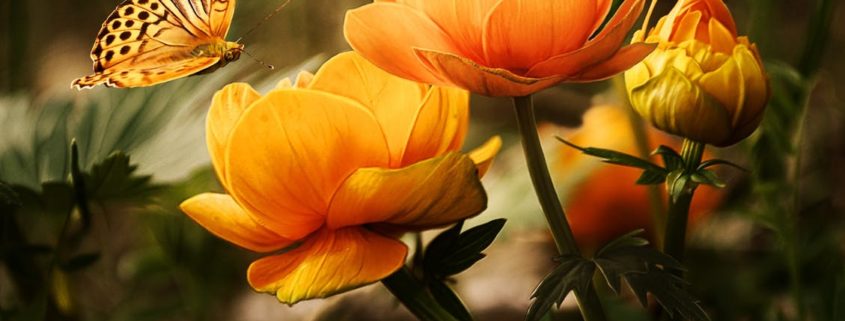Flavonoids - What are they and what are they doing in cosmetics?
What are flavonoids?
Flavonoids are so-called phytochemicals, of which there are about 8000 pieces, which can all be derived from flavan. They can be found in all plants and ensure their magnificent colors[1].
What are flavonoids chemically?

Fig. 1 The flavan molecule, with labeled rings. (A) (B) -aromatic rings, (C) tetrahydropyran ring
Flavonoids are subdivided into nine subgroups:
-
Flavanols (e.g., EGCE tea)
-
Flavanonols (e.g., taxifolin larch)
-
Flavenols (anthocyanins) (e.g., cyanidin - red cabbage)
-
Chalkones (for example xanthohumol - real hops)
-
Flavonols (e.g., kaempferol - grape)
-
Aurone
-
Flavones (e.g. hesperetin - lemon)
-
Flavones (e.g., Luteolin - Olive oil)
-
Isoflavones (e.g., genistein - soy)
These differ only slightly in their structure, and are all due to the flavan, which consist of two aromatic rings and a tetrahydropyran ring[2].
What are their properties?
Weder Tiere noch Menschen, und nur wenige Mikroorganismen können Flavonoide herstellen, weshalb sie den Pflanzen vorbehalten sind. In Pflanzen erfüllen Flavonoide verschiedenste Aufgaben. Sie dienen als Farbstoff, um Bestäuber anzulocken, als Bakterizid und Fungizid, zur Abwehr gegen Fressfeinde und Pilze, und schützen die Pflanze vor UV-Strahlung. So z.B. Binden sie sich an Glykoproteine im Speichel von Fressfeinden, und machen sich somit schwerer verdaubar, was die meisten Fressfeinde abschreckt. Durch ihre stark lipophilen Eigenschaften schützen sie vor Mikroorganismen, und durch teilweise stark methoxylierende Flavonoide schützen sie sich gegen Pilzbefall. Ebenfalls sind sie gute absorbierende Moleküle für UV-Strahlen, und können dadurch viele kurzwellige Wellenlängen an Licht absorbieren[3].
What are the uses of flavonoids?
Flavonoids are widely used in pharmacy, in vitro and in vivo, due to their anti-allergic, anti-inflammatory, antibacterial, antioxidant and anti-cancer properties. As a mono-preparation, or as medicinal plants, e.g. Camomile, real hops, ginkgo, bitter orange, marigold, licorice and meadowsweet[4].
What do flavonoids do in cosmetics?
In cosmetics, flavonoids are concomitants of plant extracts. Here different concentrations, the subgroups of flavonoids serve very different uses and tasks. From anti-aging to sunscreen and preservatives, flavonoids have many benefits[5].
Sources:
Wikipedia[1][2]
Article on flavonoids and their properties[3][4][5]




Leave a Reply
Want to join the discussion?Feel free to contribute!